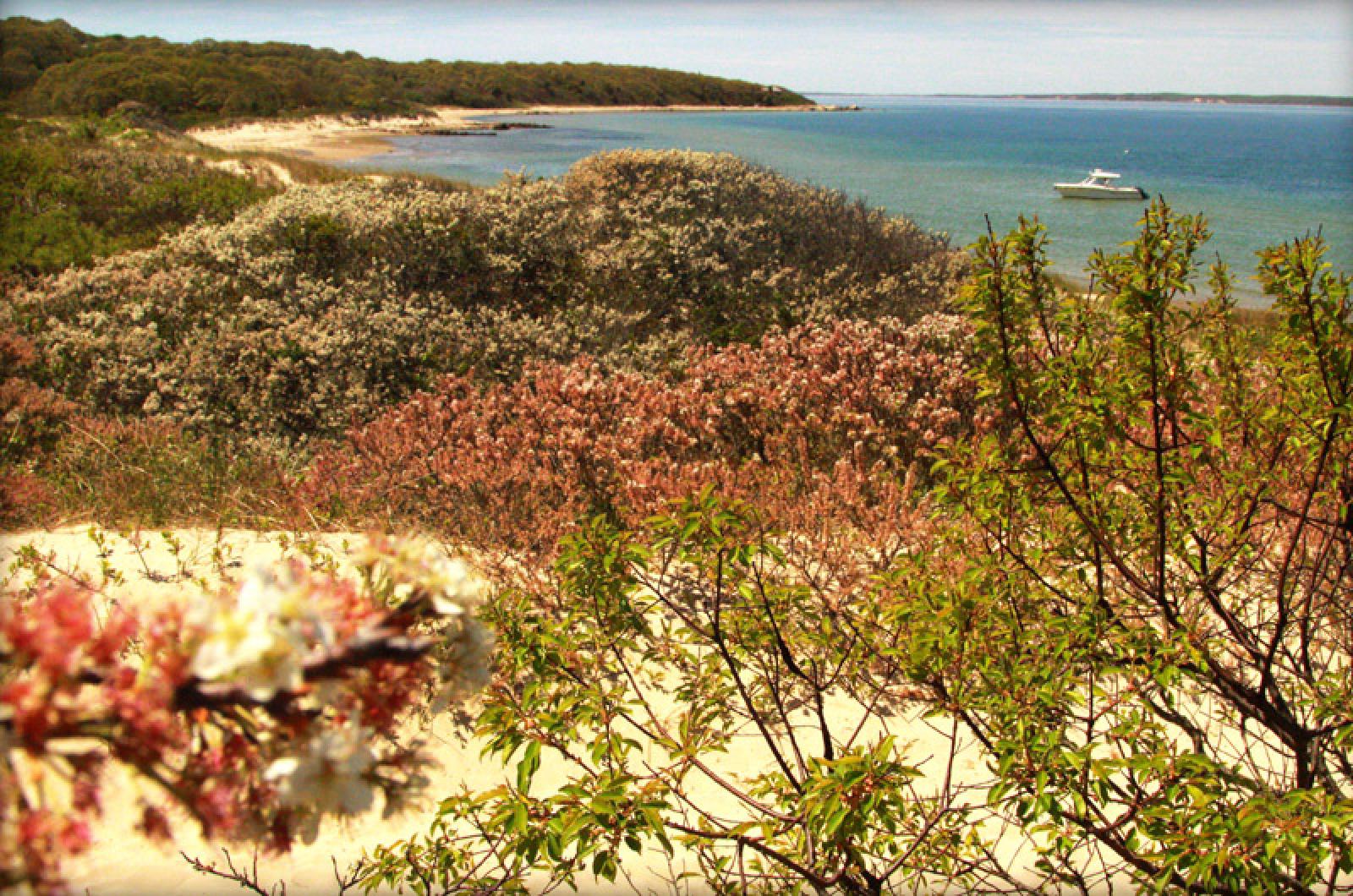If you are plum crazy, take note. Beach plum flowers are blooming, and for those who will seek their fabulous fruit in late summer, now is the time to locate this illustrious Island ingredient. It is hard to miss their creamy white flowers on leafless almost-black branches across the beaches, along roadsides, and in some of our backyards.
The pollinators certainly won’t. Beach plum flowers are self-sterile and require cross-pollination. Wind can do the job, but more likely these flowers will be covered with bees (wild, European honey, bumble — all will partake) and flies. You can tell when beach plum flowers have been pollinated because they take on a pinkish hue.
If these insects do their job, perhaps a plentiful plum harvest will be the reward. Or, perhaps not, since beach plums are known for their unpredictable nature, and weather and other factors can lead to a less than lucrative harvest. Inconsistency is a good descriptor for the fruit. The American Agriculturist magazine explained in its November 1872 issue: “The fruit varies in different plants, not only in color and size, but in quality — some specimens being quite pleasant to the taste, and others harsh and acerb.”
Finding those future fruits is the first step for lovers of nature’s perfect native plum. Remember their locations (hint – Beach Road), since as landscape architect and pomologist (fruit scientist) F. A. Waugh explained, “Plums grow pretty much as they please and the botanist has to take them as he finds them.” So it makes sense that folks have been trying to harvest and cultivate this plant for centuries. Explorer Giovanni da Verrazzano observed beach plums, which he called damson trees, along the New York and New Jersey coasts during his travels in 1524, and Henry Hudson found “blue plums” in the early 1600s along what is now the Hudson River. Successful beach plum propagation and commercialization has been elusive, even when well researched and well funded. L. H. Baily, a horticulturalist at the turn of the nineteenth century, believed that “to the student, our native and domestic plum flora will long remain the most inviting, perplexed and virgin field in American pomology.”
The love affair with beach plums never faded. In 1841, 15,000 bushels were harvested in Barnstable, Dukes and Nantucket counties. The Vineyard even had its own beach plum buff.
In 1941, Mrs. Wilfred C. White of Vineyard Haven was presented with the first award from an Arnold Arboretum grant established by plum lover professor James Jewett. She was distinguished for being an “individual who had done the most to exploit the beach plum.” Mrs. White conducted experimental beach plum plantings, and successfully petitioned the Massachusetts Legislature for funds for research to be conducted by the state Agricultural Experiment Station.
Today, there are ornamental cultivars that bear familiar Island place names including Hancock, Squibnocket, and Northneck.
Take advantage of the current showy display of plum flowers to identify the plants for future harvest. And when the fruit eventually ripens, seize that opportunity too. As essayist Logan Pearsall Smith once asked, “What is more mortifying than to feel that you have missed the plum for want of courage to shake [or identify] the tree?”
Suzan Bellincampi is director of the Felix Neck Wildlife Sanctuary in Edgartown, and author of Martha’s Vineyard: A Field Guide to Island Nature.




Comments
Comment policy »